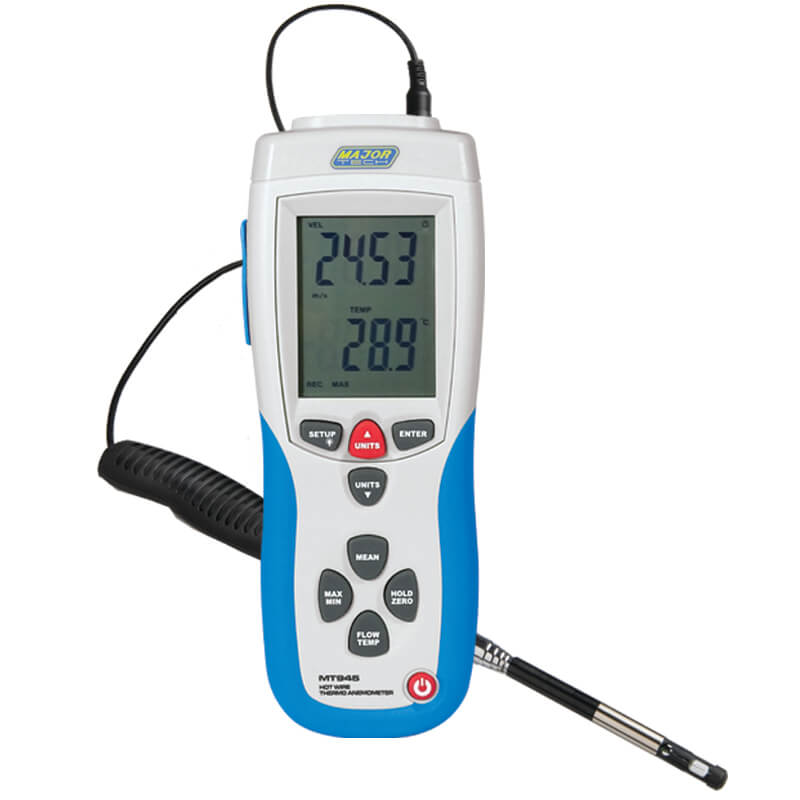Anemometer Innovations: The Current Modern Technology for Wind Rate Dimension
Anemometer Innovations: The Current Modern Technology for Wind Rate Dimension
Blog Article
Anemometers Revealed: Recognizing Their Value in Environmental Tracking and Precaution
The function of anemometers in environmental surveillance and safety actions is commonly ignored, yet their significance is indisputable. From meteorology to air travel safety, anemometers play a critical function in providing precise information that notifies decision-making procedures and enhances general safety.
History of Anemometers
The evolution of anemometers can be traced back to the old human beings where basic wind determining tools were initial utilized. One of the earliest known anemometers was the hemispherical mug anemometer designed by Leon Battista Alberti in the 15th century.
In the 18th century, the renowned scientist John Thomas Romney Robinson introduced the Robinson anemometer, which featured four hemispherical cups placed on horizontal arms that extended from a central axis. This design became a standard in meteorological measurements because of its precision and dependability. For many years, advancements in technology resulted in the growth of even more modern-day anemometers, consisting of ultrasonic anemometers and laser Doppler anemometers, supplying raised accuracy and performance in gauging wind rate and instructions. The background of anemometers showcases an impressive trip of technology and progression in the area of meteorology.
Kinds Of Anemometers
Throughout the area of weather forecasting, different kinds of anemometers have been established to properly measure wind speed and instructions. Sonic anemometers make use of ultrasonic signals to gauge wind speed and direction properly. Hot-wire anemometers run based on the principle that the cooling impact of wind on a warmed wire is proportional to the wind speed.
Applications in Weather Forecasting
Having actually talked about the different kinds of anemometers used in weather forecasting for gauging wind rate and instructions, it is important to discover their functional applications in the area. Anemometers play a crucial role in meteorology by providing accurate and real-time data on wind conditions (anemometer). Meteorologists utilize anemometers to keep an eye on wind rate and direction to forecast weather patterns, issue warnings for severe weather occasions like twisters, tornados, and cyclones, and examine climatic conditions for aviation safety and security
In weather forecasting, anemometers assist in comprehending regional and regional wind patterns, which are vital for predicting climate modifications and figuring out climatic fads. These gadgets are likewise used in study to examine microclimates, urban heat islands, and air contamination dispersion. Additionally, anemometers are utilized in agriculture to maximize plant management techniques, such as watering and pesticide application, based upon wind conditions.
Significance in Aviation Safety And Security
An indispensable facet of making certain air travel safety hinges on the careful monitoring of wind problems utilizing anemometers. Anemometers play a critical function in aviation by giving real-time information on wind speed and direction, assisting pilots in Check Out Your URL making notified choices during landing, liftoff, and flight. Strong and unpredictable winds can dramatically impact airplane procedures, making it important for air travel authorities to count on accurate wind measurements to guarantee the safety and security of travelers and team.

In the vibrant environment of air travel, where also minor adjustments in wind rate and direction can have extensive effects, anemometers stand as important devices for promoting protected and secure air travel.
Function in Environmental Research
Exactly how do anemometers add to advancements in environmental study? Anemometers play an essential duty in ecological research by offering crucial data on wind speed and instructions. This details is vital for recognizing various atmospheric processes, such as air contamination diffusion, weather patterns, and environment adjustment. By accurately determining wind features, anemometers help researchers examine the activity of pollutants in the air, evaluate the impact of industrial discharges, and anticipate the spread of pollutants in the setting.


Final Thought
In conclusion, anemometers have actually played a critical function in environmental surveillance click this link and safety measures. Comprehending the importance of anemometers is crucial for precisely measuring wind rate and direction, which is vital for forecasting weather condition patterns, making certain secure air travel operations, and carrying out ecological studies.
One of the earliest known anemometers was the hemispherical mug anemometer developed by Leon Battista Alberti in the 15th century. Over the years, developments in modern technology led to the development of even more modern anemometers, including ultrasonic anemometers and laser Doppler anemometers, supplying enhanced accuracy and efficiency in check out here determining wind rate and direction. Hot-wire anemometers operate based on the concept that the cooling result of wind on a warmed wire is proportional to the wind rate. Meteorologists make use of anemometers to keep track of wind rate and direction to forecast weather condition patterns, concern cautions for severe weather condition occasions like hurricanes, twisters, and tornados, and evaluate atmospheric problems for air travel safety and security.
Recognizing the significance of anemometers is necessary for properly gauging wind speed and direction, which is crucial for forecasting weather patterns, making certain risk-free aeronautics procedures, and conducting environmental researches. (anemometer)
Report this page